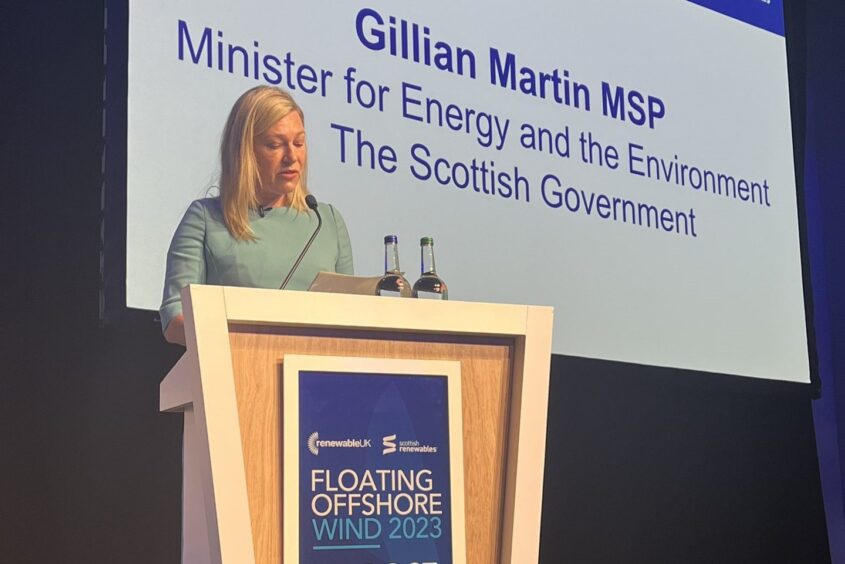
In the wake of a disappointing renewables auction the government must do more if it is serious about meeting floating wind targets, according to Scotland’s energy minister.
Opening the Floating Offshore Wind Conference in Aberdeen on Wednesday, Scottish energy minister Gillian Martin said the sector was a “brilliant success story so far” but that recent developments raised “serious questions” over the UK government’s ability to deliver.
The UK intends to reach 50 GW of offshore wind by 2030, including 5 GW of floating wind by the same date. However, a washout in the recent Contracts for Difference (CfD) round is likely to make achieving those goals even more challenging.
Meanwhile RenewableUK CEO Dan McGrail also told the event that of those 5GW, the organisation estimates that just 1.3GW is presently on track for delivery within the deadline.
In a report released on Wednesday morning, the group said the sector urgently needed “a step-change” from government, to ensure investment was forthcoming.
“There’s no denying that not securing a single megawatt of new offshore wind is a missed opportunity,” Ms Martin said.
“This year’s auction raises serious questions about the UK government’s approach to safeguarding energy security.”
She suggested the sector had successfully spoken out in the wake of AR5 and made clear that the upcoming round, AR6, “cannot go the same way.”
“If the UK government is serious about its target for floating offshore wind it cannot afford to lose any more time, and the people in this room cannot afford to lose any more time,” she said.
Addressing supply chain support, she said the Scottish Government was continuing to progress its Strategic Investment Model (SIM) – a framework that aims to align investment in local supply chains, ports and infrastructure with project plans put forward by wind developers.
Ms Martin said a full prospectus for the SIM would be launched in November.
Consenting is ‘The Thing’
In a brief Q&A following the minister’s address, Scottish Renewables CEO Claire Mack asked how the mammoth work of consenting could be accelerated, with Ms Martin agreeing that this was “The Thing” that government could do to support the wind buildout.
Mas Martin also pointed to the need for “imminent jobs” in managing these processes for the gigawatts of fixed and floating wind making its way through the planning process in the wake of the ScotWind round.
With people working in the marine spatial planning field “thin on the ground”, she said this could be a clear pathway for those working in oil and gas looking to make the transition, or for those currently studying and considering their future career options.
The minister was also pressed on whether she could provide any insight into the direction of the Scottish Energy Strategy and Just Transition plans, the release date for which were pushed to summer 2024 in an announcement made last week.
She said a significant volume of responses had been received and that the Scottish government was taking those submissions “very, very seriously”, accounting for the long lead time in delivery.
“There’s quite a lot of moving parts in energy right now and we want to see the energy skills passport over the line, we want to see the finalised energy bill by UK government,” she added.
This was important, so that when delivered the Strategy would offer a “clear roadmap” and not just “a government document on a shelf.”
However Scottish Renewables director of communications and strategy Nick Sharpe last week said the two-year delay to receipt of a final strategy is “not the pace at which policy making should move in an emergency,” and put “billions” of pounds of investment at risk.
Recommended for you
